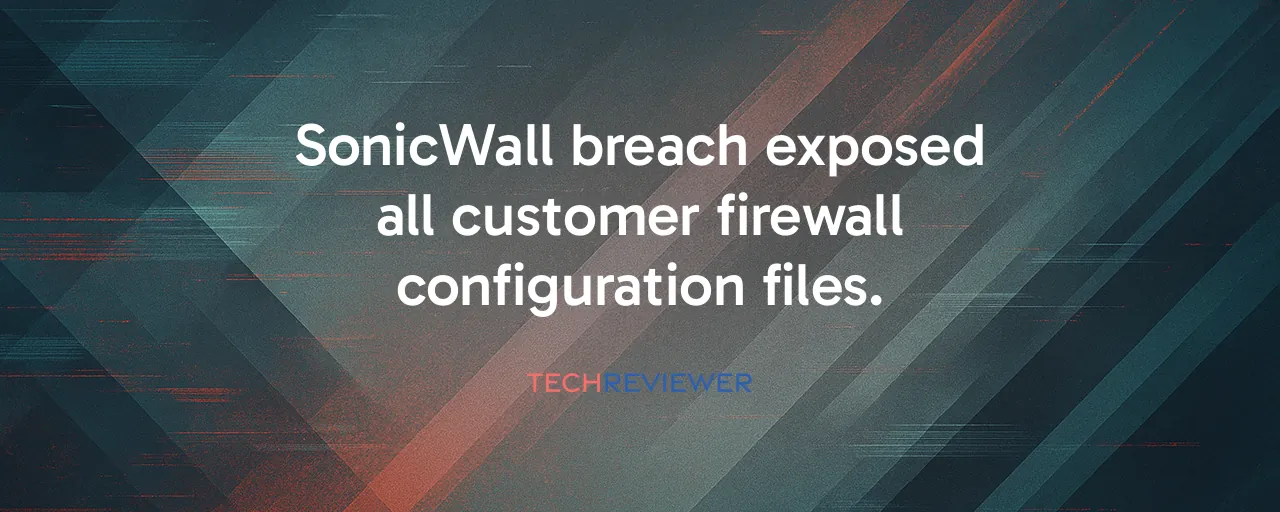A Breach That Caught Everyone Off Guard
In early September 2025, SonicWall detected unusual activity in its MySonicWall cloud backup service. At first, the company reported that fewer than five percent of its customers were affected by a brute force attack targeting firewall configuration files. By October 8, after an investigation with Mandiant, SonicWall revealed a far worse reality: every single customer using the cloud backup feature had their files stolen. These files, packed with encrypted credentials, firewall rules, and network details, are a goldmine for attackers looking to map out and exploit enterprise networks.
The shift from a minor incident to a full-blown crisis stunned customers. Many organizations, from banks to healthcare providers, rely on SonicWall's firewalls to protect their networks. The breach exposed a harsh truth: even trusted security vendors can become weak links. Arctic Wolf researchers pointed out that stolen firewall configs provide attackers with a blueprint of a company's network, including user permissions, VPN setups, and routing tables. While the data is encrypted, possession of these files alone heightens the risk of targeted attacks.
What Makes Firewall Configs So Valuable?
Firewall configuration files are like the architectural plans of a company's digital fortress. They contain detailed information about network topology, security policies, and authentication mechanisms. For attackers, this data is a treasure trove. Even without decrypting credentials, hackers can analyze firewall rules to spot weak points, identify internet-facing services, or uncover misconfigurations. Arctic Wolf's Stefan Hostetler explained that nation-state actors and ransomware groups, like those behind Akira and HelloKitty, have long targeted these files to plan sophisticated attacks.
SonicWall's Gen 7 firewalls use AES-256 encryption for individual credentials, offering a layer of protection. Older Gen 6 devices, however, lack this safeguard, leaving their users more exposed. The MySonicWall cloud backup API adds another encryption layer, but SonicWall hasn't disclosed its strength, creating uncertainty about how secure the stolen files truly are. For organizations, this means a race to reset credentials and reconfigure devices before attackers can exploit the data.
Lessons From Past Breaches
The SonicWall incident isn't an isolated case. In 2017, Equifax suffered a massive breach when attackers exploited a vulnerability in a third-party component, compromising 147 million customer records and costing over 1.38 billion dollars. The attack began with a small foothold in a vendor's system, much like how SonicWall's cloud backup service became the entry point in 2025. Similarly, the 2021 Colonial Pipeline ransomware attack, triggered by compromised VPN credentials, disrupted fuel supplies across the U.S. and led to emergency declarations. Both cases show how third-party security failures can ripple through critical systems.
A key difference with SonicWall's breach is its scope. While Equifax and Colonial Pipeline affected specific sectors, SonicWall's exposure spans industries, from small businesses to government agencies. The lesson? Centralized cloud services, while convenient, create single points of failure. Organizations learned from Equifax to patch systems quickly, but SonicWall's breach shows that even patched systems can be vulnerable if vendor infrastructure falters. Companies now face the challenge of balancing cloud convenience with the need for isolated, secure backups.
The Fallout and Fixing the Damage
For SonicWall's customers, the breach means urgent action. Security teams are scrambling to reset credentials, update firewall rules, and monitor for suspicious activity. Small businesses, often without dedicated IT staff, face the toughest hurdles, as remediation requires technical expertise and time they may not have. Larger enterprises, like those in banking or healthcare, must also navigate regulatory requirements, such as GDPR or U.S. state breach notification laws, which may classify exposed firewall configs as reportable incidents.
SonicWall has urged customers to check devices for updates and follow remediation guidance. Meanwhile, competitors like Palo Alto Networks and Fortinet are likely to see an uptick in interest as organizations reconsider their vendor choices. The breach also fuels a broader push for zero-trust security models, where no system or vendor is implicitly trusted. By adopting layered defenses and on-premises backups, companies can reduce reliance on single vendors and mitigate risks from future breaches.
A Wake-Up Call for Cloud Security
The SonicWall breach highlights a growing tension: cloud-based management tools offer scalability and ease, but they also create new vulnerabilities. Brute force attacks succeeded because the MySonicWall API lacked robust defenses like rate limiting or multi-factor authentication. This gap allowed attackers to exploit a service meant to protect critical infrastructure, turning a security feature into a liability. Security experts argue that cloud services handling sensitive data need stronger protections, like behavioral monitoring or geographic access restrictions.
Looking ahead, the incident could reshape how organizations approach firewall management. Some may shift to air-gapped backups, storing configs offline to avoid cloud risks. Others might adopt dual-vendor strategies, using firewalls from multiple providers to spread risk. The breach also strengthens the case for zero-trust principles, where continuous verification replaces outdated perimeter defenses. For SonicWall, rebuilding trust will require transparency and robust security upgrades to prevent another crisis.
